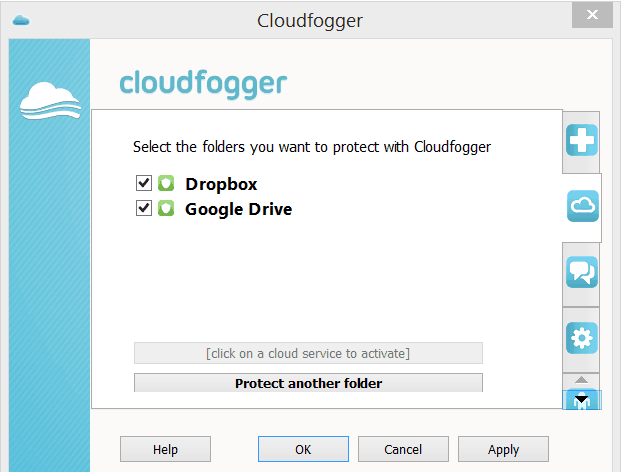What Was the Cloudfogger File Encryption Tool?
Cloudfogger was a file encryption tool that could protect your data when you sent it to the cloud. It was a free tool perfectly suited for a privacy conscious generation.
Cloudfogger shut down its service, but Cloudwards is keeping the original article for reference.
You always need to keep a backup or two of important things that you can access anywhere. Still, the news lately is saturated with acronym’s like PRISM and NSA and people have taken notice.
With all of the cloud storage services out there today either you take the responsibility to encrypt your data or the company does. It’s a logical next step to have a tool like Cloudfogger around to encrypt the files at the system level and then send it to the cloud.
How to Conquer Cloud Storage Challenges Even If You're Tech-Shy

- Demystify cloud storage terminology and key concepts in plain language
- Discover easy-to-implement techniques to securely backup and sync your data across devices
- Learn money-saving strategies to optimize your cloud storage costs and usage
Cloudfogger’s Security Features
CloudFogger uses 256-bit AES (Advanced Encryption Standard) to encrypt your data on a PC or a Mac. The file viewer for Android and iOS ensures that you can read your own files from any device. The software uses automatic, transparent encryption; everything is accessed as always once you’ve entered the Cloudfogger key.

This happens at boot but the system forgets the key when it powers down. Your hard drive is also encrypted in case of theft. It’s cool that while you can choose files and folders to protect, there is no need for manual decryption. Setup has only the following steps:
-
Download Cloudfogger from the website. Open an account.
-
Select the directories you want to protect.
-
Place files into those directories and when a green shield appears, they are encrypted.
That’s it. The file extension for encrypted files is “.cfog” and only your key can access these files. You can also create a Cloudfogger virtual drive. At issue is the premise that large companies, like some cloud providers are beholden to the governments where they do business.
That means that relying on your service provider to protect you might not be the soundest policy.
Complaints
On the other hand, in regards to Cloudfogger, there have been quite a few issues reported. One need quickly only peruse a forum or two to find comments like this:
“Crappy Support. Have not been able to access my files on my Tablet or Phone for months. Looking for methods to remove the application without leaving my files encrypted and inaccessible. Annoying…”
From the above worse-case scenario, to not quite as ‘annoying’ but nonetheless frustrating.
“…app works perfectly on a Windows PC but the Android version crashes claiming “no data connection….” Emailed vendor yet haven’t even gotten an acknowledgement back yet.”
The fact is that encryption is still a dicey proposition when you consider that there is software specifically designed to to cripple or hack encryption. There are also a number of things you must be aware of like text files created before or during encryption.
Conclusion
That said, Cloudfogger along with TruCrypt, SpiderOak and others do provide a way to get a firmer grip on personal security.
Of course it’s not as simple as just marking a file, but it’s still a step closer to where we want to go.

